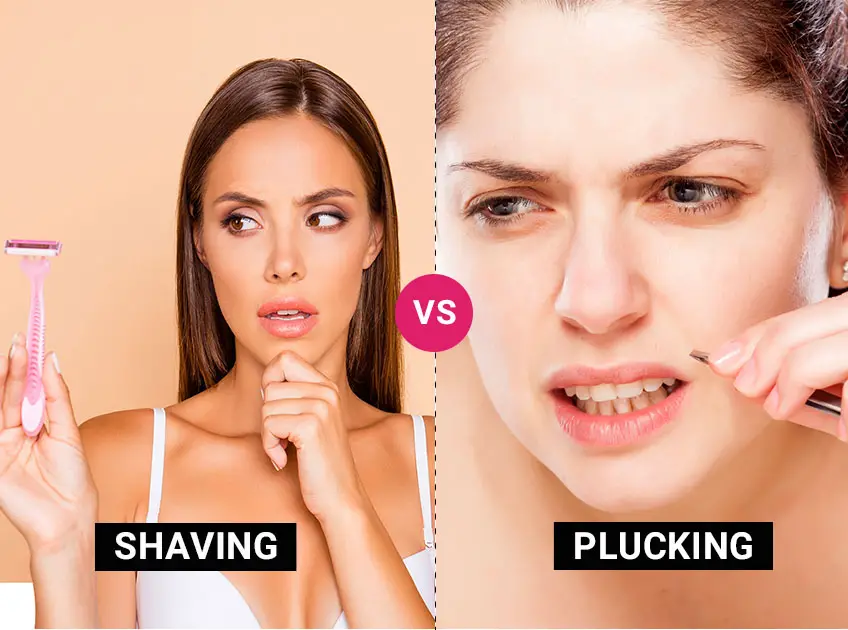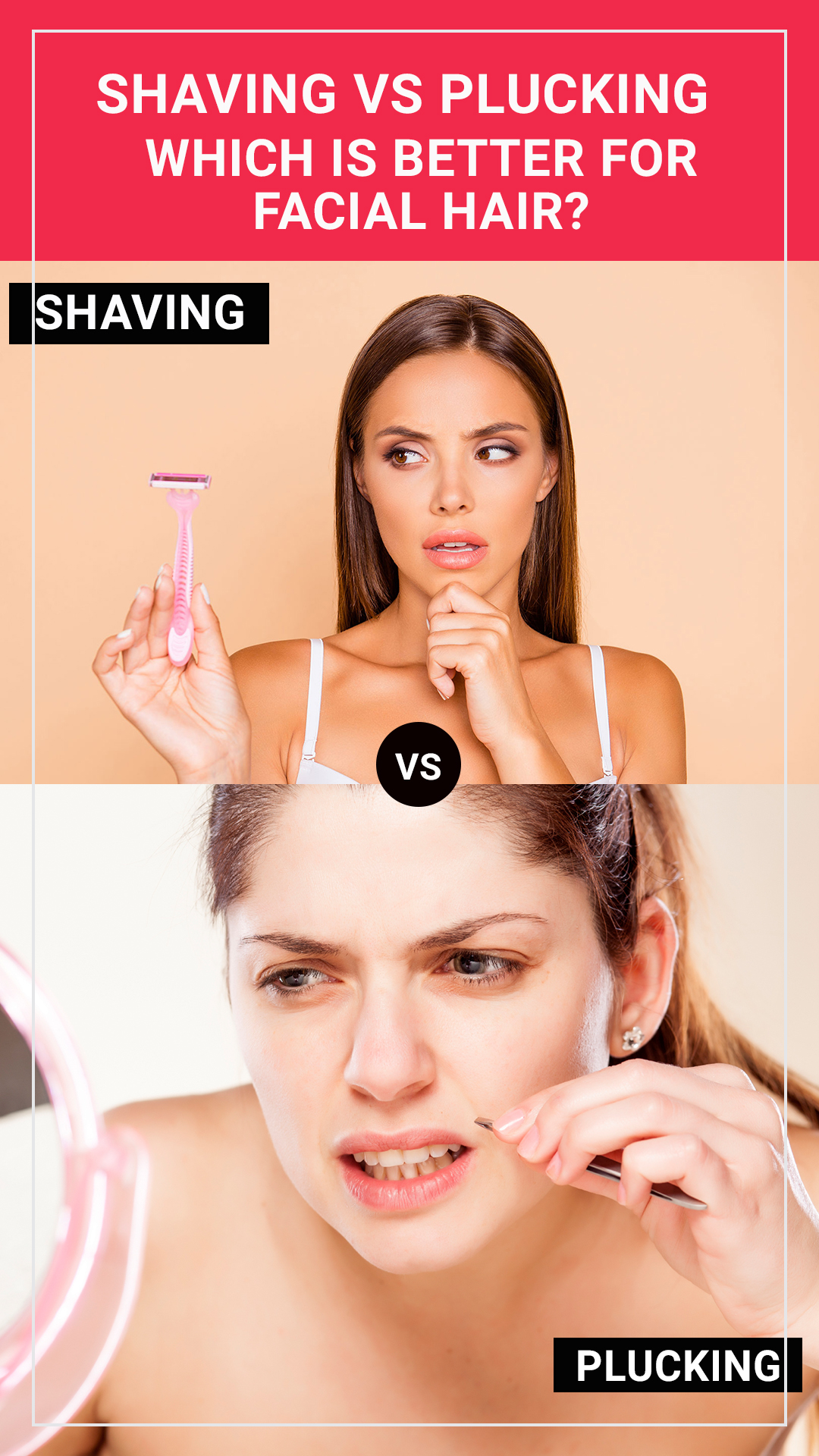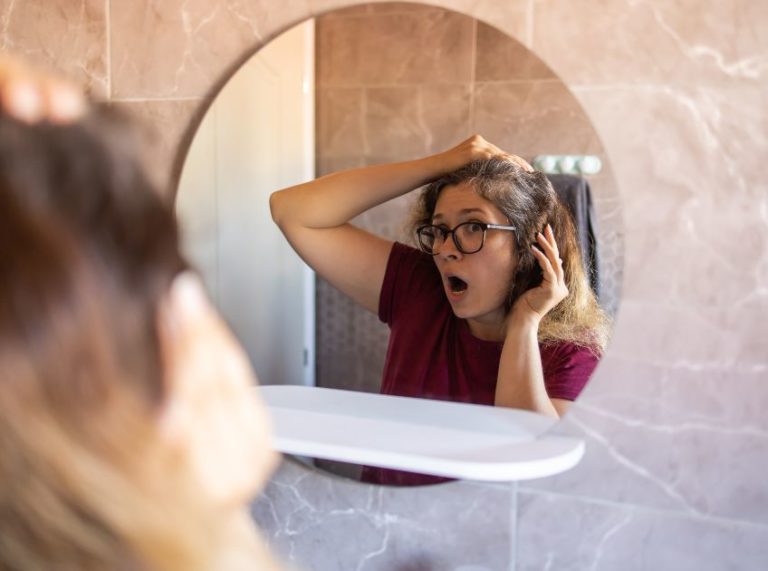
Important: This article is for informational purposes only. Please read our full disclaimer for more details.
Facial hair can be an embarrassing experience and people often resort to shaving or plucking it immediately. Various factors affect facial hair, such as hormonal changes, genetics, and others. When it comes to shaving and plucking, each has its own pros and cons. Read on to decide which is best for you.
Article Contains
Shave or Pluck Facial Hair
Shaving The Facial Hair
This is a painless method that is perfect when you do not have enough time but we have one biggest misconception about it that shaving makes the hair grow darker and thicker.
In fact, this has no effect on the hair color, thickness, or growth rate.
The reason why we feel the hair to grow coarse in 1-2 days after shaving is because that was done in a blunt razor.
Now Let’s See Its Cons
Shaving has risks of cuts, razor burn, and ingrown hairs. Using a clean and sharp razor reduces the chances of cuts. It is important to prep the skin using moisturizing shaving cream and shaves in the hair growth direction. Also, the hair regrows in 1-3 days again.
Plucking Facial Hair
This is a painful process but once done, it takes some weeks for the hair to grow back. While ding it, clean and sharp tweezers should be used.
The targeted skin should be held tightly and then the hair can be plucked in a hair growth direction to avoid too much irritation.
The tweezer should be always cleaned with alcohol before plucking the hairs as well as after that.
Shaving and plucking are both better methods but depend on individual preferences and time available to remove unwanted facial hairs. But in any case, you need to make sure to follow hygienic practices to avoid any negative effects.
You Might Also Like:
- How to Use Baking Soda for Hair Removal?
- How To Remove Hair With Baking Soda and Lemon Juice?
- How to Remove Facial Hair With Turmeric?
- 7 Best Epilators For Coarse Facial Hair
- 7 Best Shaving Creams For Acne Prone Skin
- 10 Best Facial Hair Trimmer For Women
- How to Use Lemon Juice for Facial Hair Removal
- How to Remove Facial Hair with Egg White?
- 13 Methods to Remove Facial Hair Naturally
- 5 Ways to Get Rid Of Prickly Hair After Shaving
















